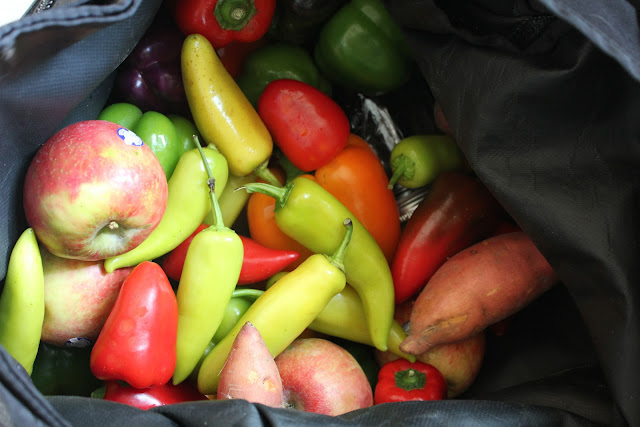My brother Brian and sister-in-law Sarah are professional food dehydrators. They lead trekking and camping trips and dehydrate food to cut down on costs and provide healthy, pre-prepped food to their campers. Thankfully, they were up vacationing from oil for the weekend and could offer their skills.
There are different kinds of dehydrators; convection-only ones, convection with fan ones and solar powered machines. My roommate's dehydrator is convection-only, so it has heat coils and the air is pulled through the trays as it cools to dry the food. This cuts down on energy and is totally silent, but takes a LONG time.
Brian and Sarah scared me into realizing that many of the foods I eat consistently now are going to be gone in a matter of weeks. I have already frozen some pears and hot peppers, but space in our freezer is limited, and as soon as the heat kicks on, I am going to need to minimize my energy budget as much as possible. Its hard to tell exactly when things will start to disappear, but to be on the safe side, I am starting to dehydrate now and will continue eating fresh until its gone. Today we did:
_Apples
_variety of Bell Peppers
_variety of Hot Peppers
_Herbs: parsley and cilantro
_Cranberries
The funnest part was checking out with an ENTIRE basket of peppers (and then trying to fit it all in my bag).
Dehydrating takes a LOT of energy. 0.1 kWh per hour, if it is on for a day (about how long it takes for one load) that is 2.4 kWh, so definetly going to eat into my energy budget. For comparison, the fridge uses .068 kWh/hour, but needs to be on all the time. In this way, dehydrating may be one of the most energy effeicient ways of preserving food because once it is dehydrated, it doesn't need any energy until it is cooked.
 |
| foods in my bag |
 |
| ready to chop |
 |
| thanks guys :) |




How did they dehydrate or preserve food in olden days? There was a lot of salting, right? and smoking? What the local native Americans eat in Minnesota?
ReplyDelete